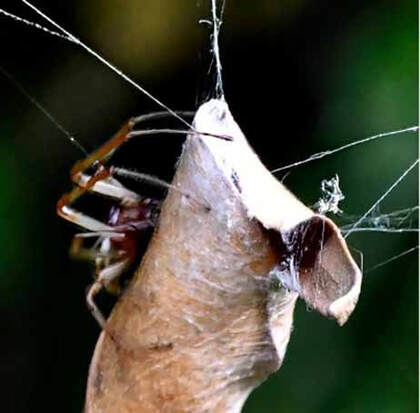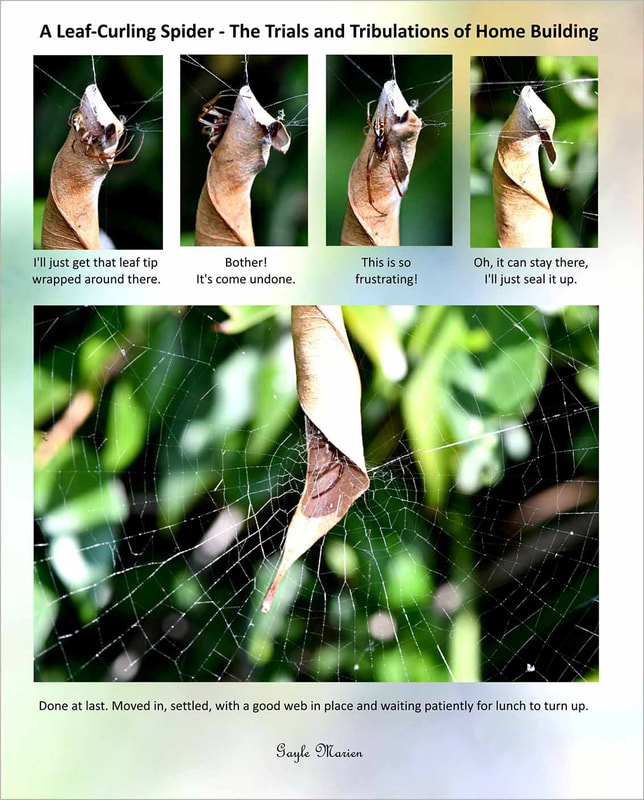
I LOOK forward to February; it’s the time of year the leaf-curling spiders (Phonognatha graeffei) begin to arrive. They make their curled-leaf homes in our lily pily trees and rarely venture out, so it was a real treat this year to see one of them in the open, weaving her leaf closed.
As I watched her, a story unfolded, a story of the ‘Trials and Tribulations of Home Building.’
The smaller male takes up residence in the top part of their leafy abode and will mate with the female when she is mature. Suffice to say he doesn’t get out much. The female waits at the open end. You will see her legs dangling from the leaf and poised on the web, waiting for the vibrations of captured prey. Only then will she race out and pull dinner inside. Lucky is the person who gets to sight her outdoors.
Juvenile spiders tend to use a smaller green leaf, as they are not yet strong enough to curl the dry leaves. Once the spiders have mated, the female builds a second home, a nursery; in another curled leaf, in which to lay her eggs. The nursery is sealed and hung from foliage away from the web.
The male has a body length of around 5mm to 6mm and the female 8mm to 12mm. Apart from their size, the appearance of the males and females is similar. Their webs are typically incomplete circles about 30cm in diameter, but I have often seen them adapt the web shape to their surrounds. I recently saw a web strung between camellia bushes, as if it as a daredevil’s tightrope. Strung over a distance of almost a metre it was easily caught by the wind and sadly, was abandoned.
